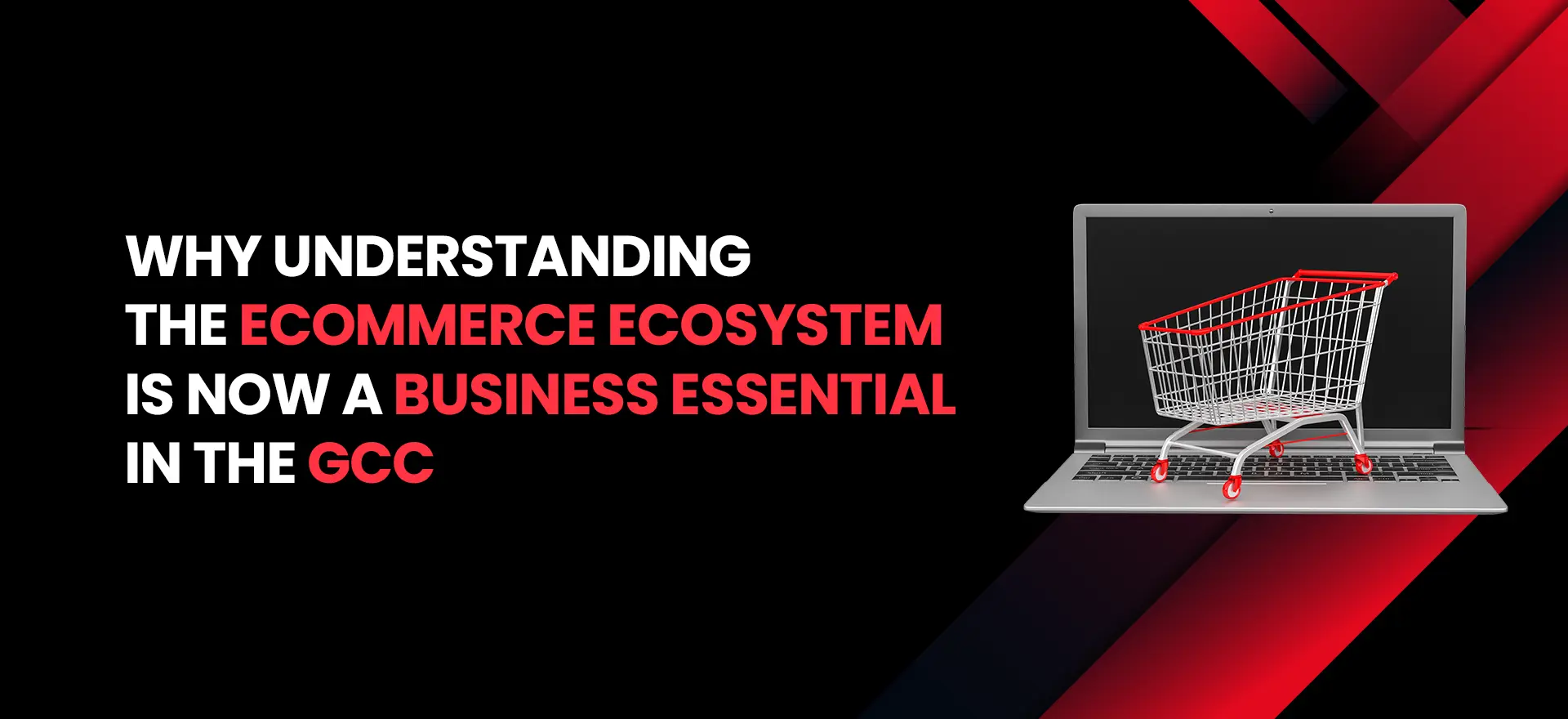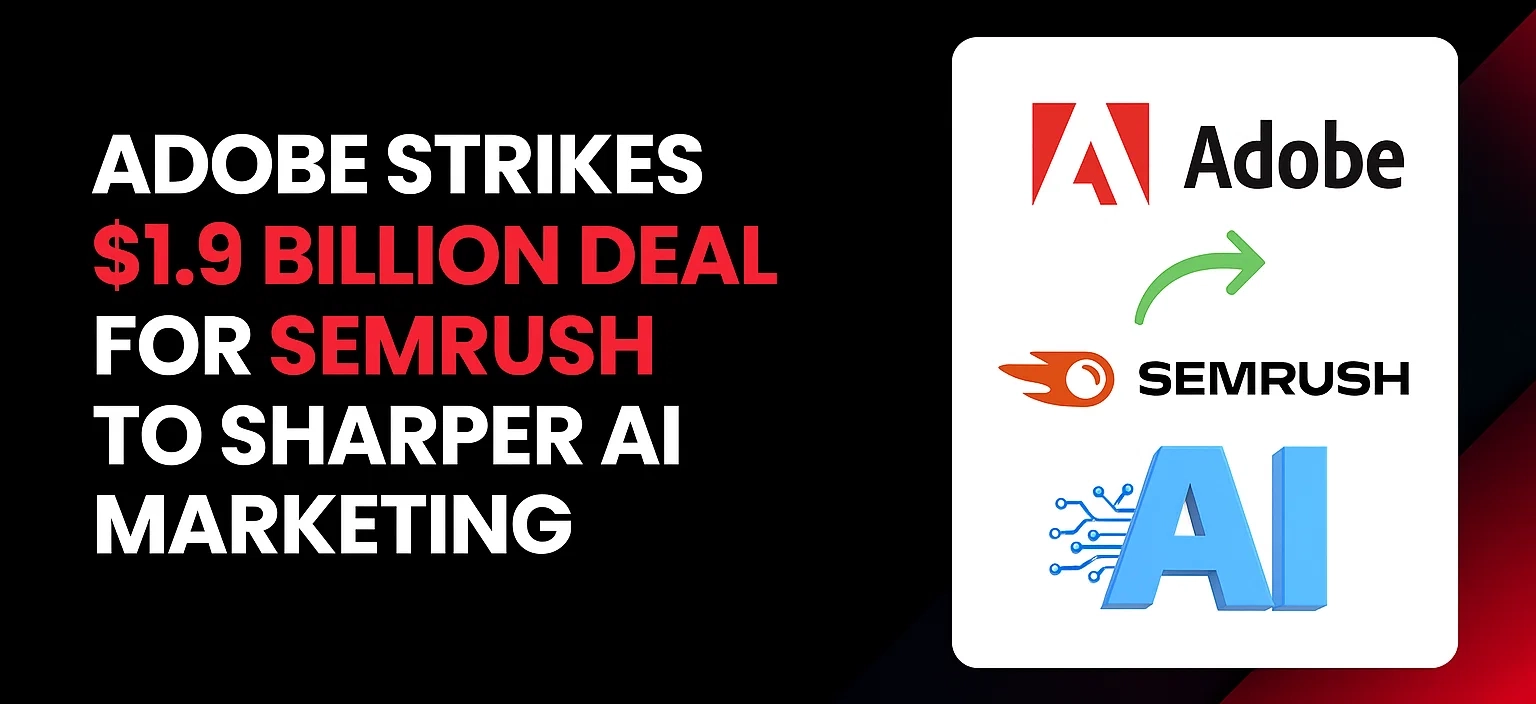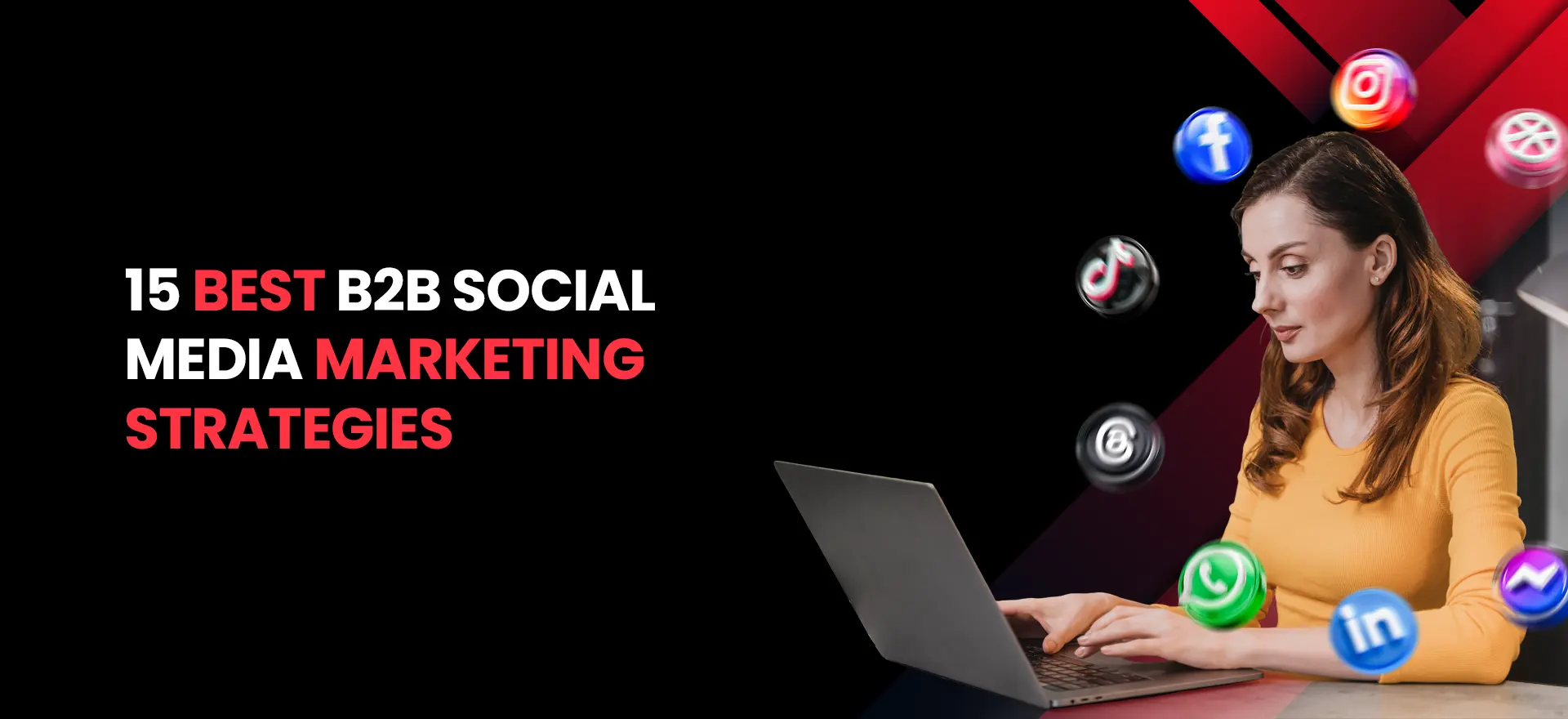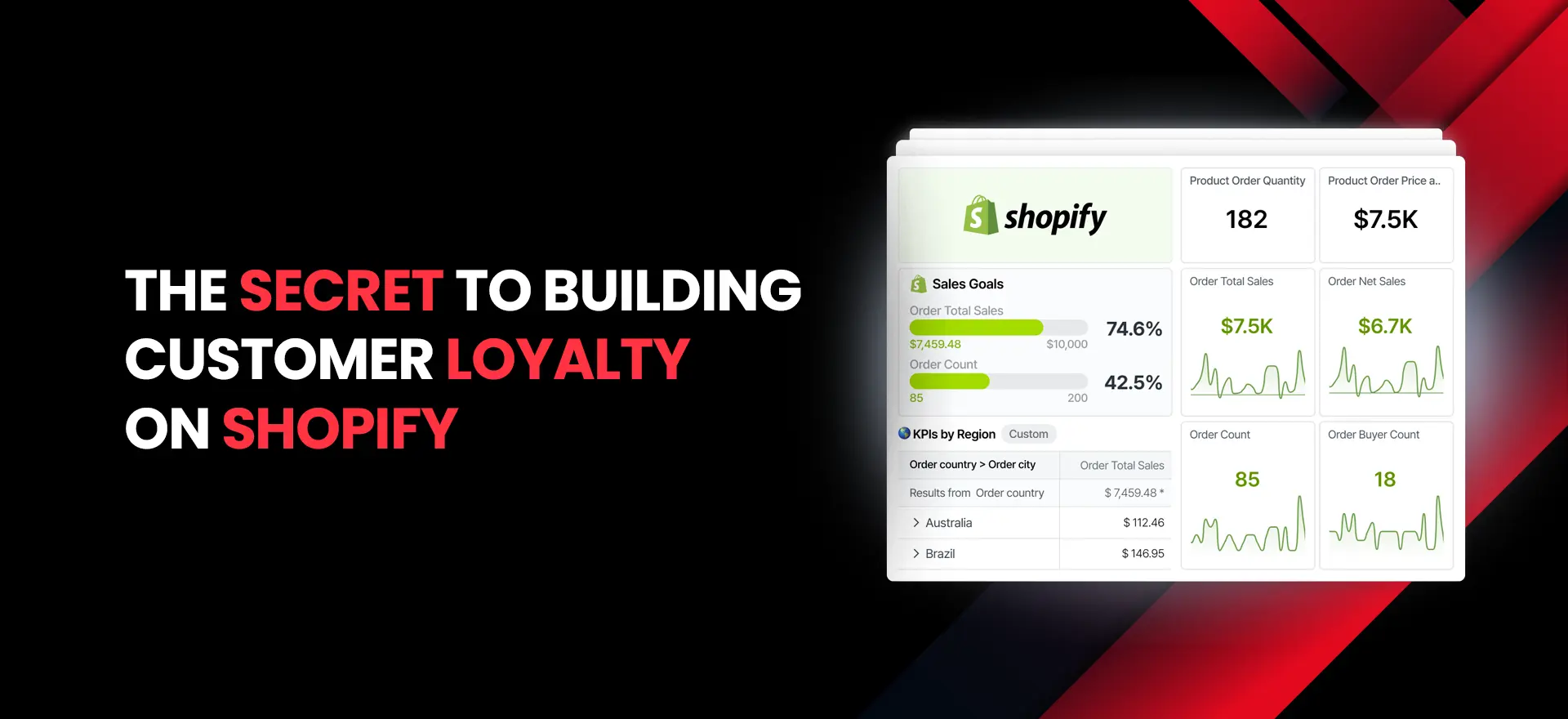The eCommerce sector in the GCC has been changing at a record pace over the past few years. In 2024, the region’s economy was worth more than USD 507 billion, and by 2033, it is expected to be worth more than USD 2 trillion. This change shows how consumer habits are changing, how new technologies are being used, and how people are becoming more comfortable with online transactions.
I’ve worked with businesses of all sizes in the area, and one thing has always been true: starting an online store is not the same as starting an online business.
The difference is knowing how to build and understand a complete eCommerce ecosystem, which is a connected system where your website, ERP, social media, paid advertising, automation, and SEO all work together. That’s where real progress happens.
Building a Complete eCommerce Ecosystem
Creating a long-lasting online business is a process, not a list of tasks.
It starts with building the right digital base and then moves on to design, operations, marketing, automation, and data-driven improvement.
Let me take you through each step, just like we do when we help brands in the GCC grow in a smart and long-lasting way.
1) Laying the Foundation: Web & ERP Platforms
A strong digital foundation is the first step to running a successful online business. This includes having the right eCommerce platform and ERP system.
Your platform controls how your customers interact with your brand, and your ERP controls everything that happens behind the scenes, such as inventory, orders, accounting, and logistics.
When the two systems communicate seamlessly, the result is accuracy, efficiency, and scalability.
Based on what I’ve learned, I always tell people to focus on a few key things:
When selecting your eCommerce platform:
- Scalability: Pick a platform that will help your business grow, not one that will hold it back.
- Speed and performance: Even a one-second delay can cut down on conversions by a lot.
- Mobile-first design: This is a must because more than 80% of GCC users shop on their phones.
- Security: There must be built-in SSL, PCI compliance, and fraud protection.
- Easy to manage: Your team should be able to change products and content on their own.
- Integration features: Make sure that your ERP, CRM, and marketing tools can all work together without any problems.
When choosing your ERP system:
- Real-time synchronization: All systems should always have the same information about inventory and orders.
- Localization: support for VAT in the GCC, multiple currencies, and interfaces in two languages.
- Cloud architecture: Can be expanded, is safe, and can be accessed from anywhere.
- Analytics and reporting: Data that turns insights into action.
When your platform and ERP are in sync, your operations become predictable, your decisions are based on data, and your customers get the same experience every time. That’s where real growth starts.
2) Designing the Digital Experience
The next step is to make an experience that connects and converts once the foundation is in place.
Design isn’t just about how things look; it’s also about how users feel when they use your brand.
More than 80% of online shoppers in the GCC use mobile devices to make decisions about what to buy. This means that speed and responsiveness are very important.
A great digital experience is built on three pillars:
1. Responsive Layout
Your store needs to work perfectly on all devices. Fast loading times, touch-friendly navigation, and accessible checkout experiences make all the difference.
2. User Experience (UX) Optimization
UX design makes sure that users don’t have to think twice about what to do next. Every click, from browsing to checkout, should feel natural and easy.
3. Conversion Rate Optimization (CRO)
A few small changes can have a big effect:
- CTAs (Call to Actions) that are clear and consistent
- Fewer checkout steps
- Transparent return policies
- Reviews and social proof to build trust
A pretty website might impress people, but a well-optimized one makes sales. The best sites don’t just look good; they also get people to buy things.
3) Using Social Media To Build Your Brand Presence (Pre-Launch and Beyond)
Your brand story should start before your online store goes live in today’s digital world.
Social media is a big part of getting people to know about and look forward to your products – especially when your products are still in the production pipeline.
This is the time to build excitement and connection with your future customers.
I always recommend to build up excitement before a launch:
- Share behind-the-scenes moments, like samples of your products and designs for your packaging.
- Post teasers and countdowns that make people want to know more.
- Let your audience vote or comment on product mock-ups that you share.
- Don’t just talk about the features of your product; talk about the problem it solves.
- Use surveys and questions to get your audience involved..
Your followers should already feel like they’ve grown with your brand by the time you launch.
After the launch, social media becomes your community engine, a place to build relationships, celebrate customers, and strengthen your brand voice.
Being consistent is important. It’s not about being everywhere; it’s about being where it matters most and having content that connects.
4) Launching & Going Live
It’s not as easy as flipping a switch to go live. It’s a carefully planned process that combines marketing, logistics, and customer experience.
A successful launch happens when preparation meets precision.
Before you go live, make sure to lock in:
Stock & Fulfillment
- Make sure that all of your systems have the right stock levels and prices.
- Combine workflows for real-time tracking and reliable delivery.
- Make sure to clearly explain your shipping times and return policies.
Creating Buzz
Make your launch feel like an event.
Use email campaigns, collaborations with influencers, and early-access offers to build excitement.
Give early buyers special discounts or gifts – it builds loyalty right from day one.
Perfecting Your Value Proposition
Your brand promise should be short and to the point: Why should someone choose you?
Whether it’s convenience, quality, or uniqueness – make your difference unmistakable.
Test Everything
Before you launch, make sure to test the whole user flow, from checkout to confirmation emails.
A single broken link or payment problem can lose you both sales and trust.
It’s not about being perfect; it’s about getting ready for a smooth launch.
Your launch sets the stage for growth when your systems, message, and experience all work together.
5) Using A Strong Digital Strategy To Get More People To Visit Your Site And Buy Things
Once your store is live, visibility becomes the next challenge – that’s where a strong digital strategy comes in.
These days, marketing isn’t about spending more money; it’s about spending it better. The future of digital marketing has already changed since the Andromeda update.
A unified strategy uses creativity, data, and technology to raise awareness and boost sales that can be measured..
Picking the Right Platforms
Each channel serves a purpose:
- Google Ads for traffic that is based on intent.
- Meta, TikTok, and LinkedIn Ads for discovery and storytelling.
- Influencer and video marketing for credibility and emotion.
The goal is to meet customers where they are and then guide them to where you want them to go.
How to Build a High-Performing Sales Funnel
Your funnel should guide users step-by-step:
- Awareness: Use interesting stories and pictures to get people to know your brand.
- Consideration: Educate users with comparisons, testimonials, and social proof.
- Conversion: Make checkout process easier and add trust signals.
- Retention: Use automation and care after the sale to build loyalty.
At each stage, you need to create and send messages that are specific to the user’s needs.
Tracking Conversions and Analytics
You can improve by tracking your analytics and learning the user behaviour.
Set up the right tracking, like Google Analytics and Meta Pixel, and keep an eye on:
- Add-to-cart rates
- Completions at Checkout
- Cost per acquisition (CPA) in AED or SAR
- Return on ad spend (ROAS)
- Lifetime value (LTV)
Don’t make assumptions; let the data tell the story.
Budget with Intent
Start small, try out different audiences and creatives, and then scale what works..
Like any investment, marketing needs insight and time to work and deliver results.
6) Scaling Retention and Marketing Automation
It’s exciting to get a new customer.
Keeping that customer coming back – that’s where sustainable profit lives.
From what I’ve seen, this is where a lot of online stores lose their momentum. They are only interested in getting people to their site, not what happens after the sale. That’s when marketing automation and retention systems can help you the most.
Automation keeps you in touch without overwhelming your audience. It makes sure that your brand talks to people at the right time, in the right way, and with the right message.
This is what I think every online store should do:
- A series of welcome emails – Tell new subscribers about your brand’s story, mission, and best-selling products.
- Abandoned-cart flows – Politely remind users of what they forgot. (You’d be surprised how many people buy everything after just one reminder.)
- After a sale, thank the customer, ask for a review, and suggest other products that go well with the one they just bought.
- Loyalty and referral programs – reward people who buy from you again and tell others about your brand.
Then, add remarketing ads to get people who looked at your site but didn’t buy.
Lastly, use personalized WhatsApp or email automation to send out updates, alerts about when items are back in stock, and special offers.
These systems don’t just help you get more sales; they also help you build relationships.
Customers come back when they feel remembered.
It’s not about chasing; it’s about caring, and automation lets you do that on a large scale.
7) Using SEO to Build Long-Term Trust and Visibility
Paid ads are like fuel – they give you instant speed.
But what about SEO? That’s the engine that keeps your business going even after the ads stop.
In the GCC, where competition is getting tougher every day, SEO has become a long-term way to build trust, authority, and long-term visibility.
Too many businesses ignore SEO because it doesn’t work right away. But those who put money into it early often stay at the top of the search results for years.
Here’s what matters most:
Website Authority
Search engines give higher rankings to brands that consistently show Expertise, Authority, and Trust (E-A-T).
You build this through:
- Giving users consistent, useful content that answers their questions.
- Backlinks from trusted media, suppliers, and partners.
- A website that works well technically: it’s fast, safe, and works well on mobile devices.
Content Richness
In modern SEO, depth is more important than density.
Don’t just repeat keywords; write with a purpose. Make helpful guides, detailed product pages, and insightful blogs.
When your content is useful, Google pays attention.
Credibility & Trust Signals
Having real reviews, clear policies, open pricing, and strong contact information all help with SEO and make customers trust you more.
Use schema markup to get rich results like ratings, prices, and stock.
On-Page Optimization
Optimize titles, descriptions, and headings naturally.
Link your most important pages to each other using internal links.
Make sure your Core Web Vitals are healthy and keep the sizes of your images small. Speed is important.
Off-Page SEO
Work with well-known blogs, creators, and business directories in the GCC to improve your online reputation.
To get local intent, make sure your Google Business Profile is optimized in both English and Arabic.
Continuous Improvement
SEO isn’t something you do once and then forget about. Regularly review performance, keep an eye on rankings, fix broken links, and update old content. Search engines and users both love websites that are alive.
When done right, SEO can bring you the most organic traffic, which is traffic that converts because you earned it, not bought it.
8) The Future Belongs to Connected and Adaptive Businesses
I’ve watched the digital world change in ways that are hard to believe over the past 20 years. I still remember when Google’s Panda Update (2011) changed the way we thought about the quality of content. Then, in 2013, Meta’s News Feed Algorithm changed how brands reached people. Every update made marketers think, change, and grow.
Then came the Google Mobile-First Index (2018), which made mobile optimization necessary, and the Meta iOS 14 Privacy Shift (2021), which changed how we track conversions.
Google’s Search Generative Experience (2024–2025) has changed the way people find and interact with information in the last few years. AI-driven understanding now powers search; it looks at more than just keywords to figure out what you want.
Meta’s 2025 Andromeda Ad System, which is powered by Advantage+ AI campaigns, is changing the way advertising is automated. Advertisers are moving from manual management to strategic leadership, focusing on data quality, creative storytelling, and customer experience. This is because machine learning is optimizing placements, bids, and creatives in real time.
Every one of these moments taught the same thing:
- Those who adapt will be successful in the digital world.
- The world of marketing will always be changing, and that’s what makes it so great.
- Brands that try new things, change, and stay interested will always be ahead.
Here’s what I’ve learned:
- Stay flexible and change faster than your competitors.
- Don’t rely on just one platform; diversify.
- Use AI and automation – but keep the human touch.
- Don’t just look at metrics; look at what customers want.
Innovation rewards courage. Agility sustains success.
Businesses that are connected, use data, and are always changing will be the ones that do well in eCommerce in the future, especially in the GCC.
9) Success Stories: Results That Speak for Themselves
At RightMedia, I’ve been lucky enough to see a lot of GCC businesses change for the better by adopting the ecosystem mindset.
When technology, creativity, and strategy all work together – results follow.
We’ve watched startups grow into well-known brands, old-fashioned stores open locations all over the world, and small teams work as efficiently as big companies..
These success stories aren’t just about ads or websites; they’re about making systems that connect everything:
- Smart platforms that scale.
- Seamless ERP integrations.
- Marketing based on data.
- Customer experiences that inspire trust.
Check out our case studies if you want to see how this works in real life. Each one tells a story of change, growth, and measurable impact.
Author Bio:
Hey, I’m Raheel Mushtaq, CEO at Right Media, and a passionate digital growth strategist with over 15 years of experience. My journey has been centered around helping brands grow through SEO, publishing, Google Ads, and multi-channel digital strategies. I focus on building sustainable growth systems that turn online visibility into measurable business success.



